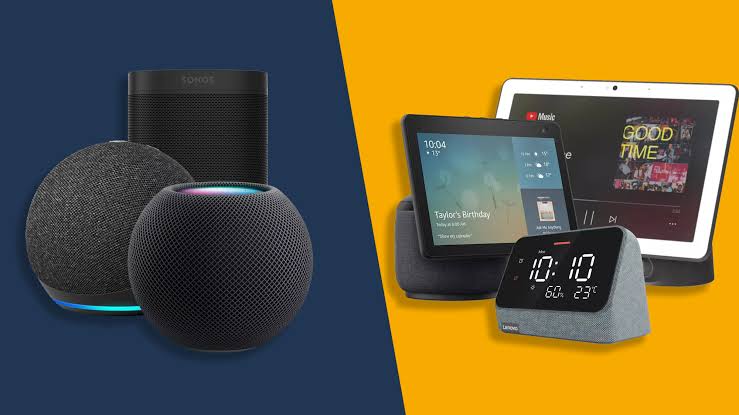Smart speakers with displays have become increasingly popular in homes, offices, and even public spaces across Canada. These devices combine the voice-controlled functionality of traditional smart speakers with a visual interface, enabling users to not only hear but also see information and interact more intuitively.
As of July 2025, models such as the Amazon Echo Show, Google Nest Hub, and Apple HomePod Display are more advanced, offering better integration with smart home devices, higher-quality screens, and improved AI assistants.
But like any modern technology, they come with both advantages and disadvantages. Understanding their full scope of impact can help users make informed decisions when adding one to their digital ecosystem.
Enhanced Visual Experience
One of the main benefits of using a smart speaker with a display is the added visual layer it provides. Users can now watch video content, follow recipe steps, view calendar schedules, and check weather forecasts all from one device.
This is particularly helpful in the kitchen or living room, where glancing at instructions or a video call is far more convenient than interacting with a phone or laptop. The screen transforms the device from a passive audio assistant into a central control hub.
In 2025, most smart displays come equipped with HD or even Full HD resolution, making them suitable for video streaming, camera monitoring, and high-quality video calls.
Improved Accessibility and Ease of Use
For many users, particularly seniors or individuals with visual or hearing impairments, smart displays provide accessibility that voice-only devices can’t offer. The combination of spoken responses with on-screen text or visuals makes it easier to understand and follow instructions.
People who are hard of hearing can read captions, while those with limited vision can use voice commands and audio feedback to operate the device. The visual layout also offers clearer control over smart home settings, from adjusting thermostats to managing lighting schedules.
The newer models released in 2025 support gesture recognition and facial tracking, adding another layer of accessibility and ease of interaction.
Enhanced Communication and Video Calling
Smart speakers with displays are also a great tool for communication. Devices like the Echo Show and Nest Hub Max support video calling through services like Zoom, Google Meet, and Skype, offering a hands-free way to stay in touch with family and colleagues.
During the rise of hybrid and remote work in Canada, these devices became valuable tools for casual check-ins or quick virtual meetings. The built-in cameras, often supported by wide-angle lenses and auto-framing features, allow for seamless interaction.
Users also benefit from features like “drop-in” calling, where approved contacts can instantly connect, making it ideal for checking in on elderly relatives or home security.
Smart Home Control Hub
With the rise of smart home ecosystems, a display-based smart speaker acts as a command center for connected devices. From the same screen, users can view security cameras, unlock doors, adjust lighting, or monitor energy usage.
This visual dashboard makes smart home control far more intuitive compared to voice-only assistants. The latest models in 2025 now support Matter and Thread protocols, ensuring better compatibility across different brands and devices.
This centralized control is not only convenient but also helps users maintain better awareness and management of their home environment.
Entertainment and Daily Convenience
Beyond functionality, smart displays offer entertainment options like music videos, movie trailers, and YouTube streaming. They can serve as digital photo frames, display personalized news feeds, or play podcasts with accompanying text.
In the kitchen, they double as interactive cookbooks. In the bedroom, they can act as smart alarm clocks with dynamic weather updates, sleep tracking, and calendar overviews.
These devices also support custom routines. For example, a “Good Morning” routine might include the display showing news headlines, weather, and your agenda, while lights gradually brighten—all triggered by a single voice command.
Privacy and Surveillance Concerns
Despite their many benefits, smart speakers with displays raise serious concerns around privacy. The presence of a built-in camera and microphone means the device is always potentially listening or watching.
Although companies claim that recordings are only triggered by wake words or specific commands, multiple studies and user experiences have shown that accidental activations do occur. There’s also the concern of unauthorized access or data breaches.
In 2025, some Canadian privacy watchdogs have urged users to be cautious about where these devices are placed, especially in bedrooms or private areas. While manufacturers have added features like camera shutters and microphone-off buttons, trust remains an ongoing issue.
Screen Distraction and Digital Fatigue
One unintended downside of smart speakers with displays is the potential for screen distraction. While they are meant to be convenient, they can sometimes contribute to screen overexposure, especially in homes with children.
Instead of encouraging passive listening, these devices might increase dependency on visual content, leading to reduced face-to-face interaction or excessive notifications. The always-on nature of the display can become a background distraction, similar to having a TV constantly running.
Parents and educators have raised concerns about how these devices may affect attention spans, especially if children begin to view them as entertainment hubs rather than tools for productivity.
Cost and Maintenance
Smart speakers with displays are generally more expensive than their audio-only counterparts. A good-quality device can cost anywhere from $150 to over $350 depending on screen size, resolution, and added features.
Additionally, they require regular software updates, and as new features are added, older models can become obsolete within a few years. This ongoing cycle may lead to unnecessary electronic waste and additional financial pressure on consumers who like to stay updated with the latest tech.
Accessories like wall mounts, stands, and privacy covers may also increase the overall cost of ownership over time.
Limited Portability
Unlike smartphones or tablets, smart speakers with displays are not designed for portability. They need to be plugged into a power source, and their usability is tied to their stationary position within the home.
This limits their use in outdoor settings or during travel. Even within the home, moving them from one room to another often means disconnecting and resetting them, which is not always practical.
For users looking for mobility and flexibility, a smart display may not be the best standalone solution.
Conclusion: A Balance of Function and Caution
Smart speakers with displays are powerful devices that offer significant benefits in terms of convenience, accessibility, communication, and home management. As of July 2025, they’ve become more refined, affordable, and user-friendly, making them a valuable addition to many households.
However, users must also weigh the drawbacks—particularly when it comes to privacy, screen distractions, and cost. By being selective about features, using privacy settings wisely, and integrating the device in thoughtful ways, it’s possible to enjoy the best that smart displays offer while minimizing the risks.
As the technology continues to evolve, these devices will likely become even more intelligent and secure, bridging the gap between human convenience and digital responsibility.



